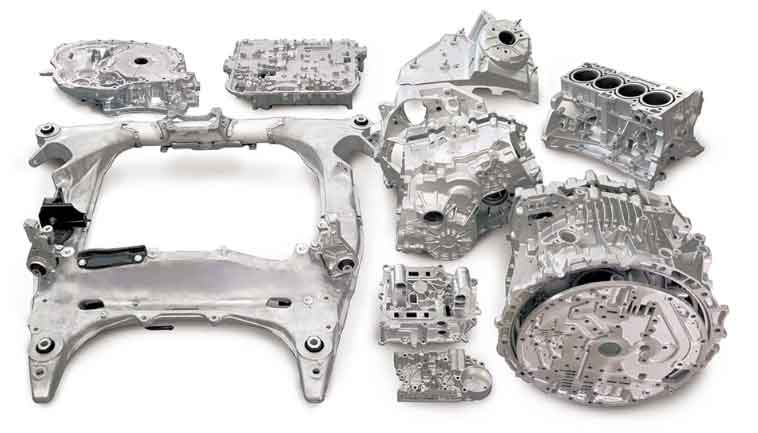
When designing for successful die casting, there are several key factors to keep in mind to optimize the process and achieve high-quality results. Here are some important design considerations for die casting:
- Draft Angles: Incorporate draft angles into the design to facilitate easy ejection of the casting from the die. Draft angles prevent the component from getting stuck in the mold and minimize the risk of surface defects during ejection.
- Wall Thickness: Maintain uniform wall thickness throughout the component to ensure proper flow of molten metal and minimize the risk of defects such as porosity or shrinkage. Avoid sudden variations in wall thickness to promote even cooling and solidification.
- Ribs and Fillets: Incorporate ribs and fillets into the design to enhance the structural integrity of the component. Ribs help reinforce thin sections and distribute stresses, while fillets improve the flow of molten metal and reduce stress concentrations.
- Avoid Sharp Corners: Minimize or eliminate sharp corners and edges in the design to prevent stress concentrations and improve the flow of molten metal. Rounded corners and fillets reduce the risk of defects such as cracks and porosity.
- Undercuts and Core Pulls: Minimize the use of undercuts or complex core pulls in the design, as they can complicate the ejection process and increase the risk of damage to the die. If undercuts are necessary, consider incorporating slides or collapsible cores into the die design.
- Gating and Venting: Optimize the gate and vent design to ensure proper filling of the mold and effective venting of gases. Proper gating helps control the flow of molten metal, while well-designed vents allow trapped air or gases to escape during the casting process, minimizing the risk of porosity.
- Parting Line Placement: Carefully consider the location of the parting line, where the two halves of the die meet. Place the parting line in areas of the component that require minimal cosmetic appearance or critical dimensions to reduce the need for extensive post-casting machining or finishing.
- Avoid Thin Sections: Minimize the use of thin sections in the design, as they can be prone to defects such as porosity or warpage. If thin sections are necessary, ensure proper gating and cooling techniques are employed to optimize metal flow and solidification.
- Cosmetic Surfaces: Identify critical cosmetic surfaces and design them to be easily accessible for post-casting finishing processes such as polishing, plating, or painting. Consider the grain flow direction and placement of parting lines to minimize their impact on the component’s appearance.
- Material Selection: Consult with material experts to select the appropriate alloy for your die casting application. Consider factors such as mechanical properties, corrosion resistance, heat resistance, and overall suitability for the intended use of the component.
By considering these design factors, you can optimize the die casting process, improve the quality of the castings, and minimize the risk of defects. Collaborating with experienced die casting engineers and leveraging their expertise early in the design stage can help ensure a successful and efficient die casting process.
